Mopar is Chrysler’s parts, service, and customer care division, and the name is a combination of “MOtor” and “PARts.” Enthusiasts commonly use the name Mopar when referring to any products built under what used to be the Chrysler Corporation umbrella (it’s Stellantis now).
Back in the day, only Chrysler, Dodge, Plymouth, and Imperial were Mopars. Eventually, AMC and Jeep were bought by Chrysler, and the Dodge Ram lineup became a standalone brand. Chrysler has been making cars for over a century now, and we’ve tried to include vehicles from as many Mopar brands as possible. This list isn’t just about the fastest and most potent Mopar vehicles but also the game-changing models.
Plymouth Valiant
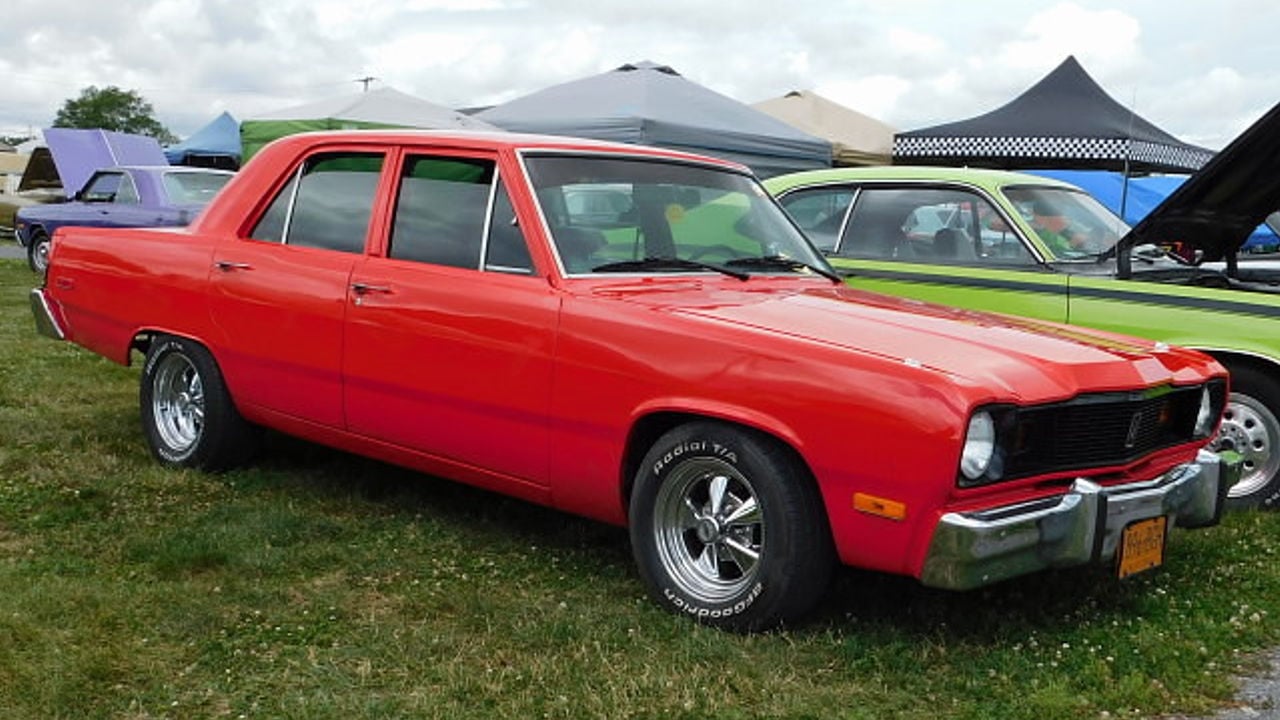
Plymouth created the Valiant in the late 1950s so they’d have an entry in the growing compact market. Thanks to its excellent reliability, the Valiant became a bestseller and helped keep the company in business during an economic downturn.
When the oil crisis hit in 1973, carmakers had to shift from gas-guzzling muscle cars to models that carefully sipped fuel. In 1976, the Valiant was replaced by the Volare, which certainly didn’t earn a reputation for reliability, and by 1979, the Chrysler brand was facing bankruptcy.
Dodge Charger Daytona
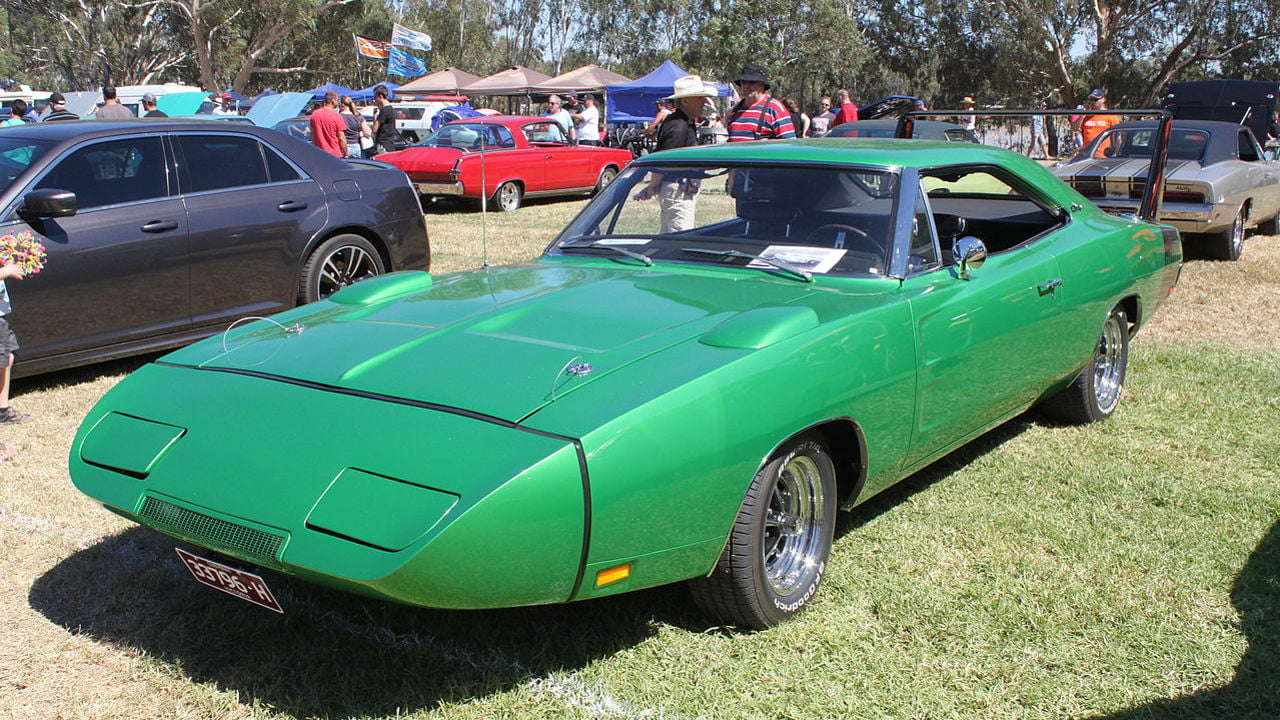
NASCAR initially used cars that were available to purchase at dealerships. By the late ’60s, race cars had to be homologated, meaning manufacturers had to build a specific number of cars to sell. Dodge had to make 500 Charger Daytonas in 1969 to satisfy NASCAR’s rules.
Dodge added a massive wing and a nose cone to its popular Charger muscle car. The engine of choice was a 426 Hemi V8, one of the most legendary units ever made. Dodge dominated NASCAR in the following seasons until aero cars were banned in 1971.
Plymouth Superbird
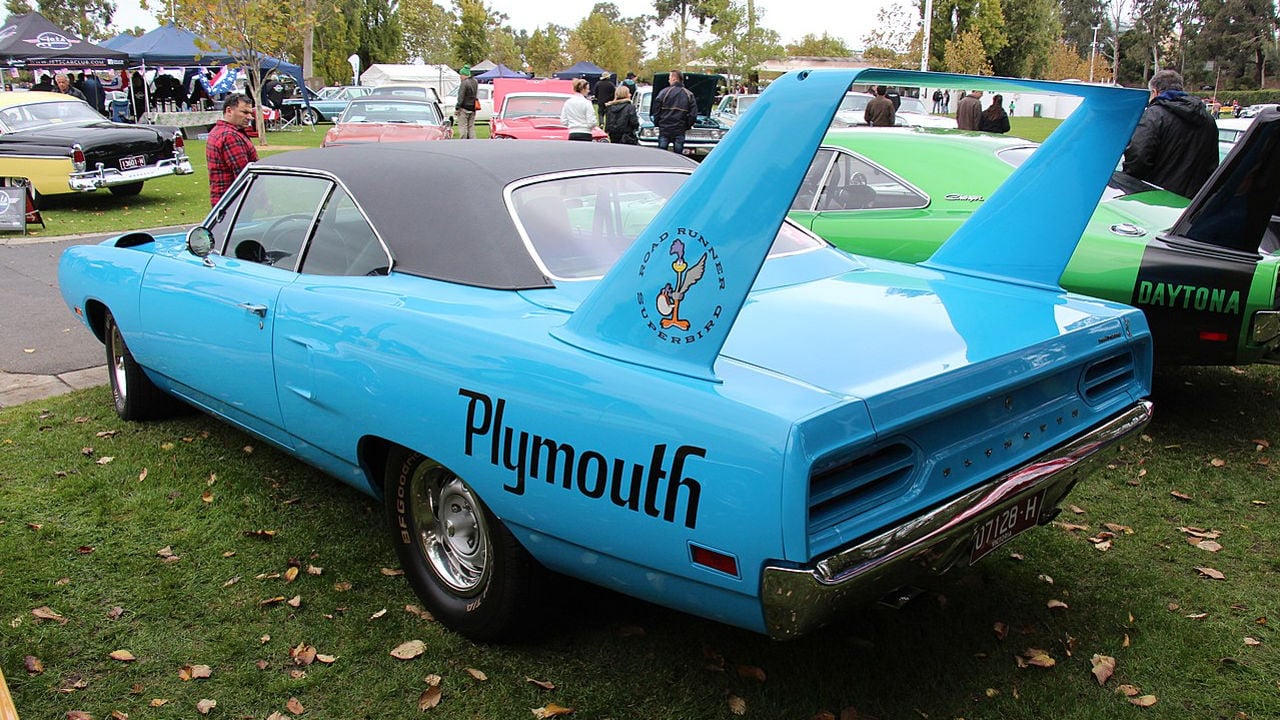
The story of the Plymouth Superbird is practically identical to that of the Dodge Charger Daytona—fit aero parts and annihilate the competition on the track.
Today, the Superbird is among the most sought-after muscle cars, and when one comes up for sale, it fetches ridiculous amounts of money. It wasn’t always like that. When the Superbird was new, nobody wanted it, and dealers had to remove the wing and nose to make it more attractive.
Dodge Power Wagon
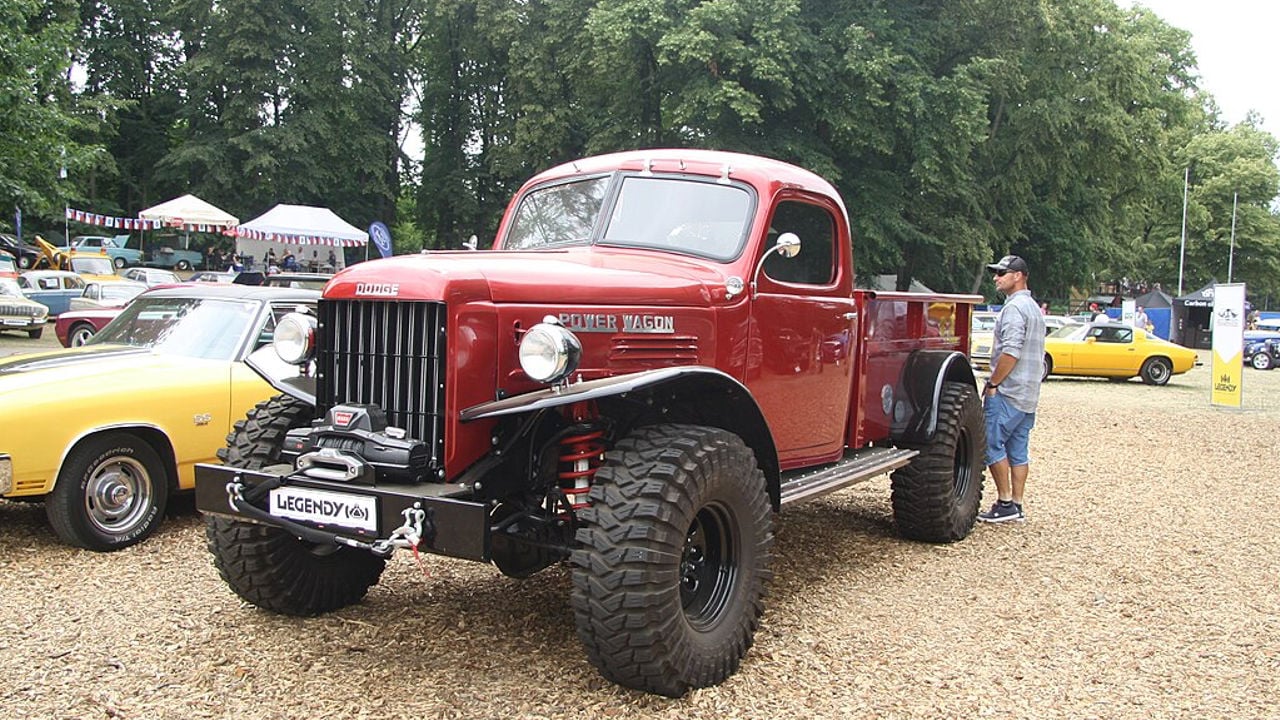
The Dodge Power Wagon was essentially a civilian trim level of a military truck. Dodge supplied it to the US military during WWII, and it’s credited as one of the vehicles that pioneered the modern 4×4 drivetrain.
From there, the Dodge Power Wagon became a very successful vehicle with farmers and forest workers until it was retired in 1980. The nameplate was brought back in 2005 as a version of the Ram 2500 truck and is still in use today.
Plymouth Barracuda
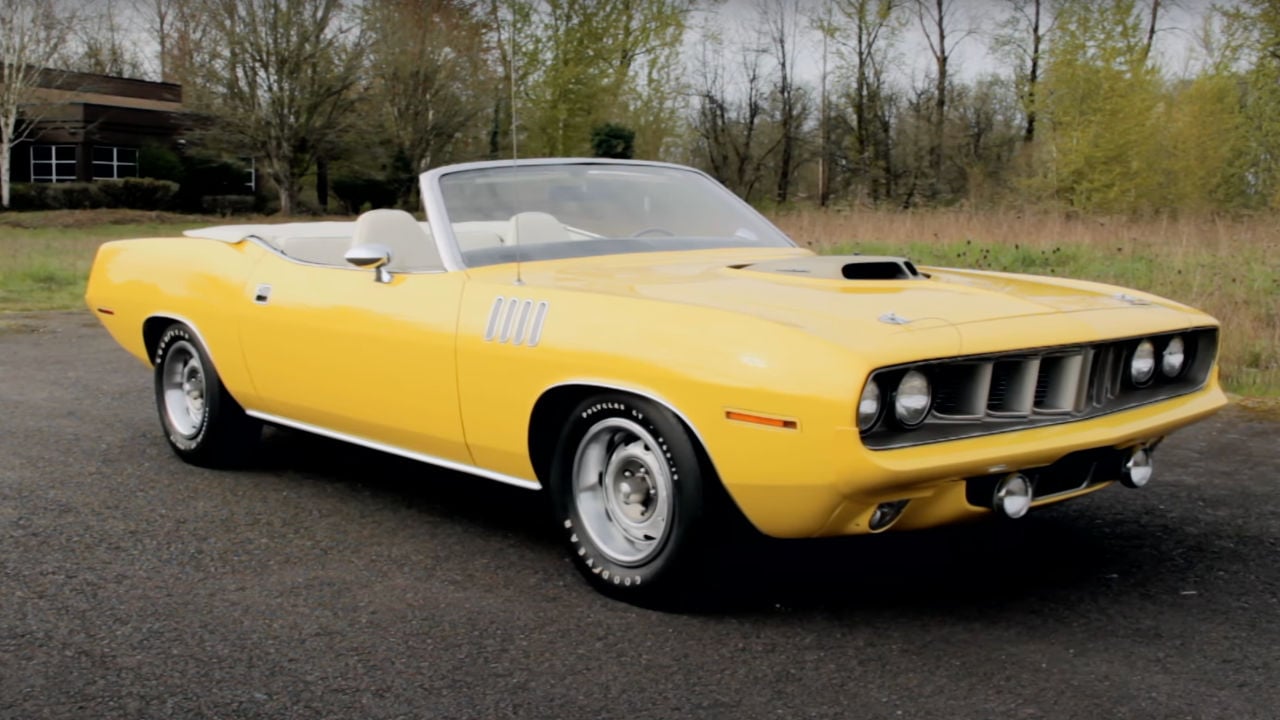
In 1964, the Plymouth Barracuda was an affordable, sporty compact car. It grew in size and power until it culminated in the now-iconic Hemi Cuda.
Based on the E-body, the Hemi Cuda wasn’t viewed as an economy car like its predecessors. With a 426 Hemi V8 engine under its hood, the ‘Cuda was a monster, and it’s still remembered as one of the most excellent muscle cars ever.
Plymouth Road Runner
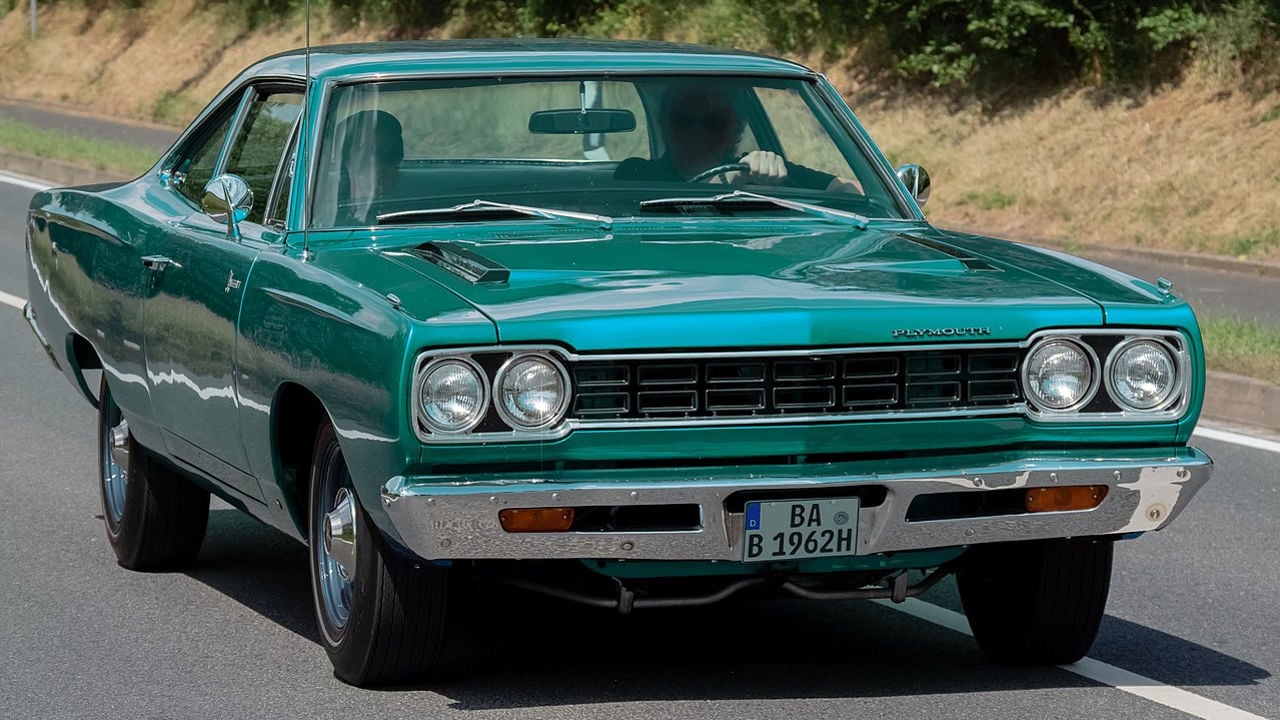
In 1968, Plymouth wanted to make its mark on the muscle car scene, and the way they did it was pure genius. Plymouth paid Warner Brothers $50,000 to license the famous Road Runner cartoon character that always managed to outrun and outsmart Wile E. Coyote.
They then built the Road Runner on the Chrysler B-platform and offered it with a range of V8 engines, including the 426 Hemi. With 425 horsepower, bold styling, and a horn that went “meep meep,” the Road Runner was an instant hit.
Dodge D Series Truck
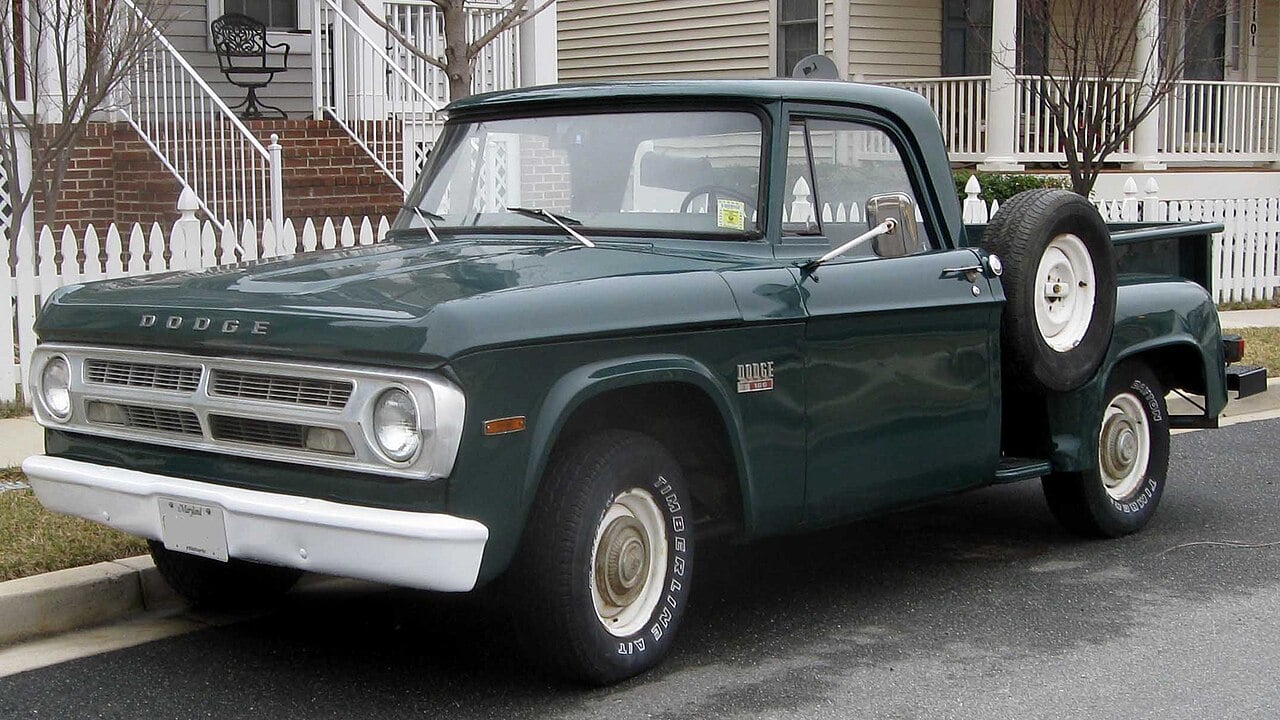
Dodge introduced the D series truck in 1960, and by the time production ended in 1993, it had become an American pickup truck icon. Part of the reason it was so popular is that Dodge made some very entertaining, high-performance versions of the Dodge D.
The Dodge D series always had a masculine design, and it packed enough power to back up any statements made by its exterior. How masculine was it? There was a model called The Dude and another bearing the name Macho Power Wagon. It doesn’t get much more hairy-chested than that.
1978 Dodge Li’l Red Express / Midnite Express
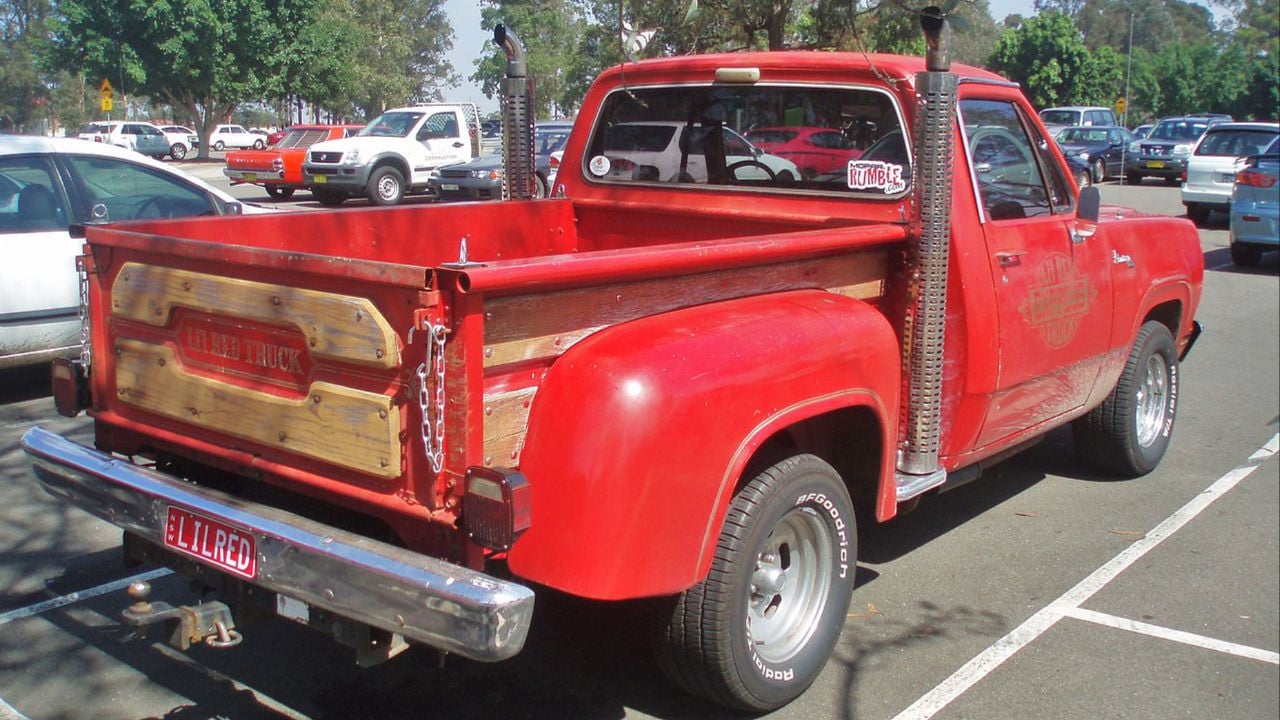
The Dodge Li’l Red Express was based on the D series truck, but it was such a game-changer that it deserves an entry of its own. Decades before the Ram SRT-10 existed, the Li’l Red Express high-performance truck put the fear of God in sports car drivers.
This truck was the fastest American vehicle in 1978; with a 0 to 60 mph time of 7.5 seconds, it smashed Corvettes. As its name suggests, the Li’l Red Express was red, and there was also the black Midnite Express. Whereas the red truck had a 360 V8, the black one was powered by the 440.
Plymouth Fury
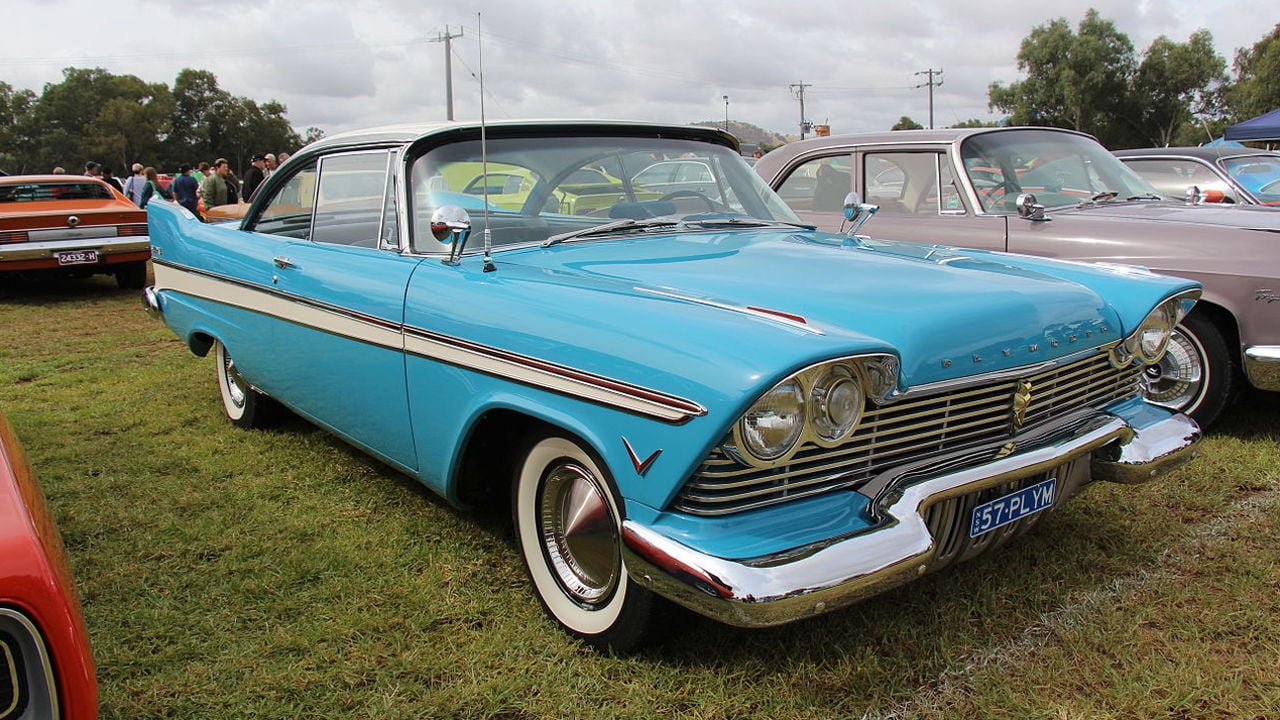
Plymouth introduced the Fury as a sub-series of the Belvedere in 1955, but by the time the second generation arrived in 1959, it was a separate model and one level above the Belvedere.
It was in production for 34 years and flip-flopped between being sold as a full-size and midsize car. At one point, it was even a full-blown muscle car, and also offered in luxury trim levels to compete against models such as the Ford Galaxie 500 LTD and Chevrolet Impala Caprice.
Ram Daytona
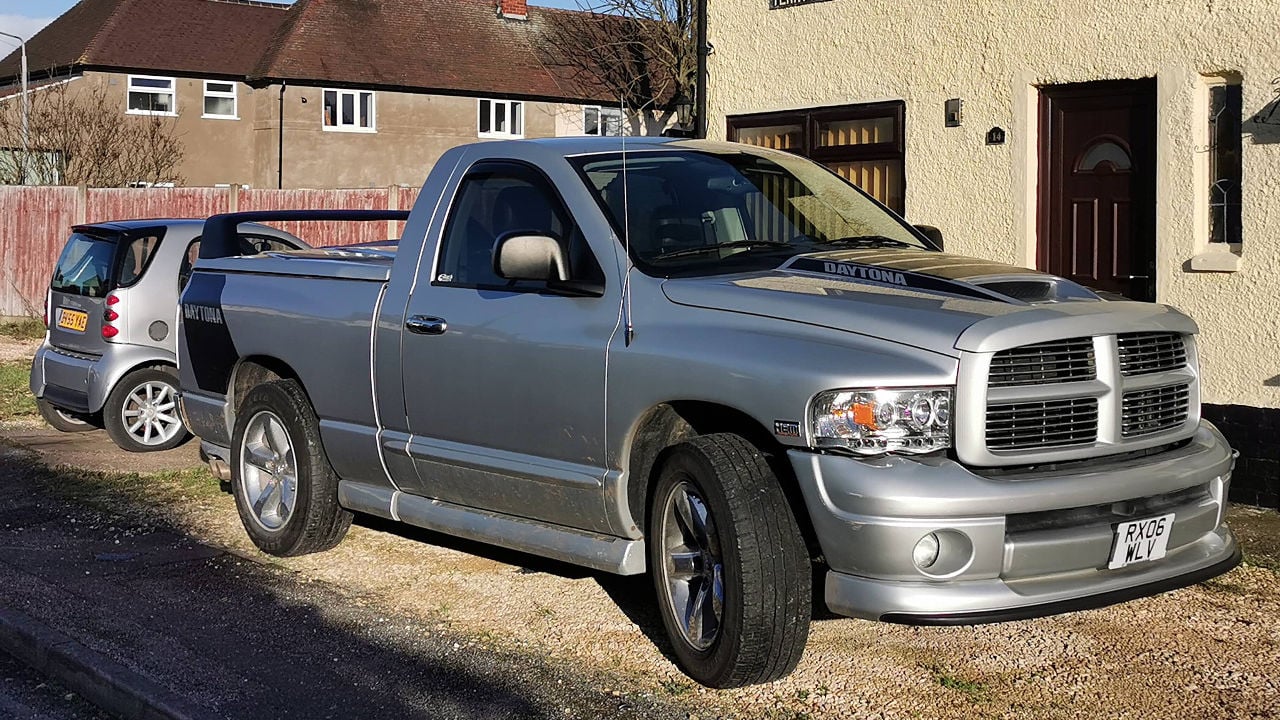
The 2005 Ram Daytona was a sporty light-duty pickup truck that capitalized on the Dodge Daytona name. It had a unique body kit, 20-inch chrome wheels, a hood scoop, and a large wing on the back, just like the Charger Daytona.
Granted, in stock form with its chrome wheels and wing installed, it wasn’t the most practical work truck. However, it had a 5.7-liter Hemi V8 and was available in regular and quad-cab styles, so it was fast even with the whole family onboard.
Dodge Super Bee
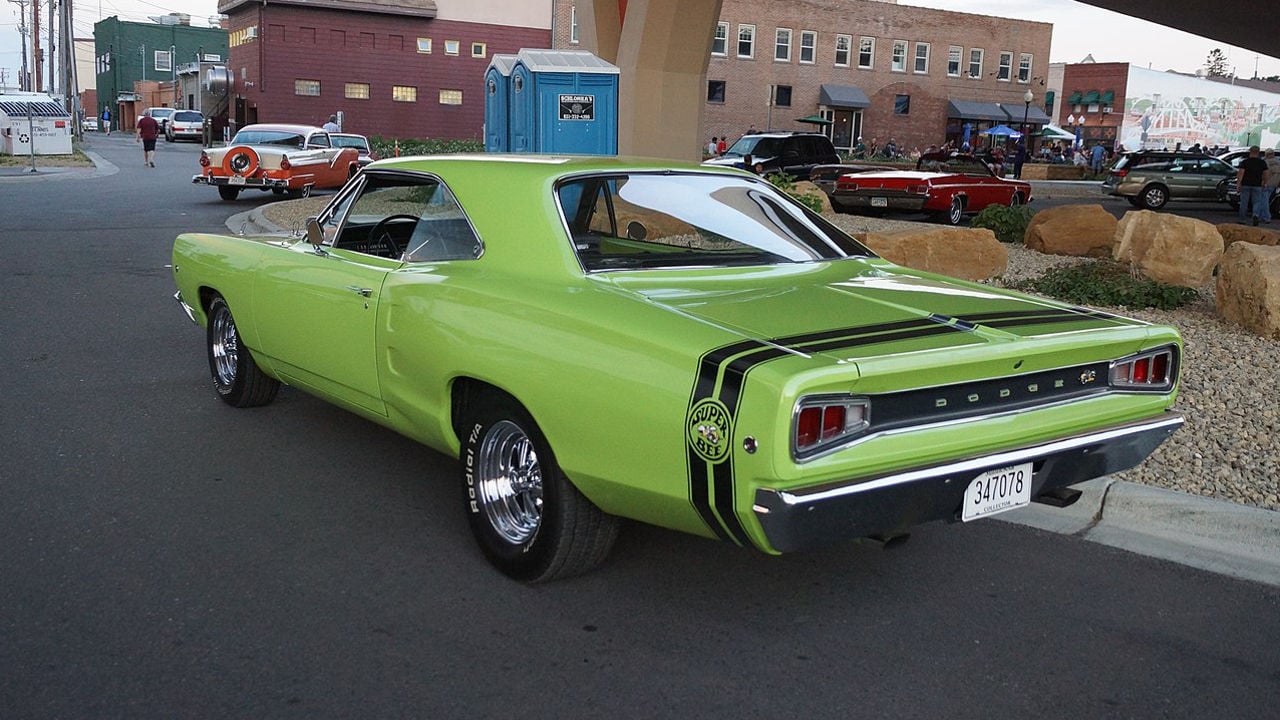
Dodge realized that Plymouth was onto something with its Road Runner, so they devised their own take on it—the Super Bee. The name was fitting, as it was built on the B-platform.
With bold, angry bee graphics and powerful engines, the 1968 Super Bee was a raving success. However, by 1971, it was nothing more than a low-priced car built on the Charger platform. Sales dropped, and it was discontinued the same year. In 2007, Dodge brought back the Super Bee name for use on the Charger SRT-8.
Chrysler 300
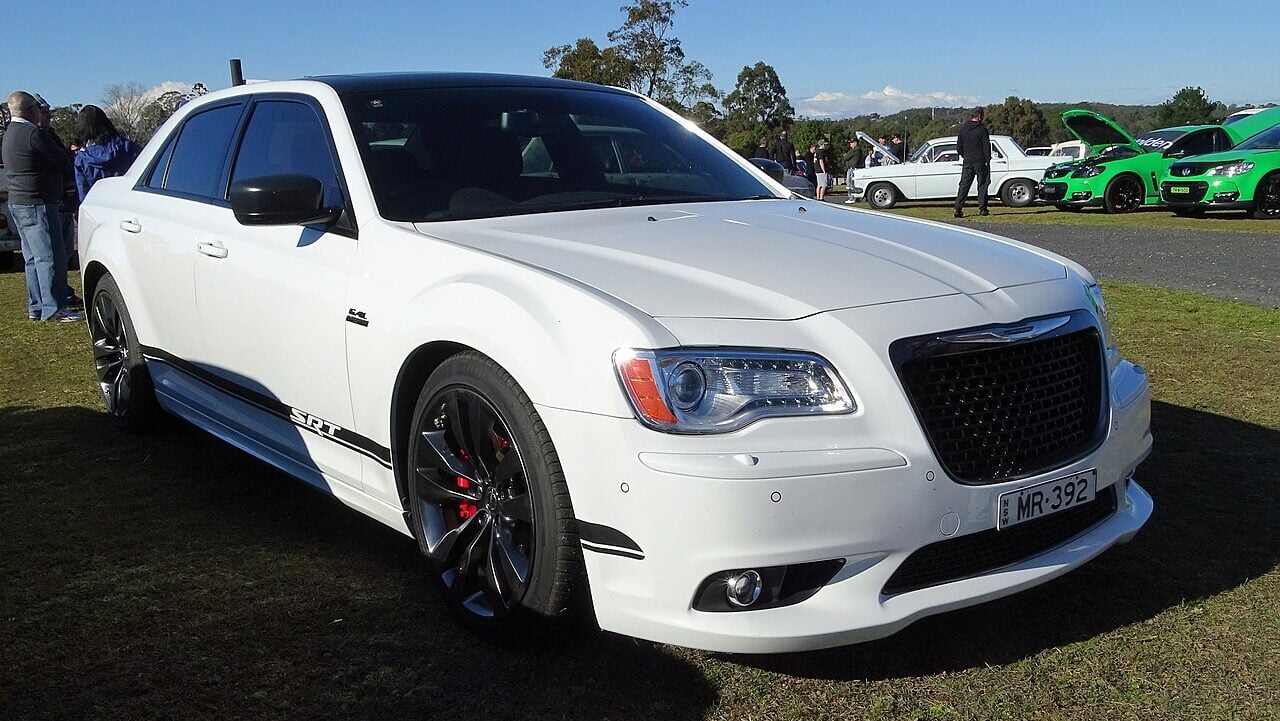
The Chrysler 300 has always been a mean-looking car. Chrysler introduced it in 1955 as a NASCAR homologation special. It was advertised as “America’s Most Powerful Car” and went on to win races in near-stock form.
Later, the Chrysler 300 transitioned into a luxury car, but even the modern versions from the last two decades pack a serious punch. With a design reminiscent of a Bentley, a powerful V8 under the hood, and a wallet-friendly price, we’re not surprised it’s a huge success.
Plymouth Duster
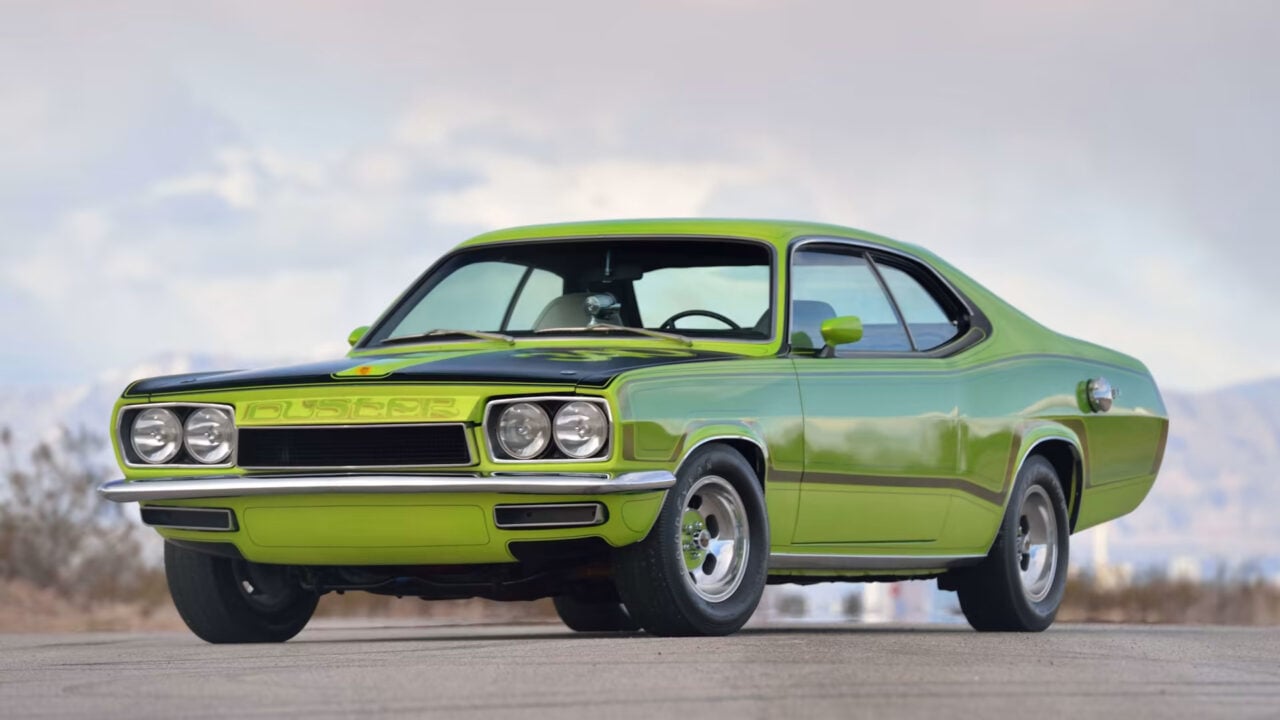
Plymouth introduced the Duster for the 1970 model year to compete with cars such as the Ford Maverick, Chevy Nova, and AMC Hornet. The Duster was only available as a two-door coupe, as those who wanted a four-door model could buy the Valiant.
Plymouth offered the Duster with a 340 V8 that sent 350 horsepower to the rear wheels. It had various cleverly named trim packages during its production run, such as Gold Duster, Space Duster, and Feather Duster. Plymouth sold 1.3 million Dusters between 1970 and 1976.
Chrysler Imperial
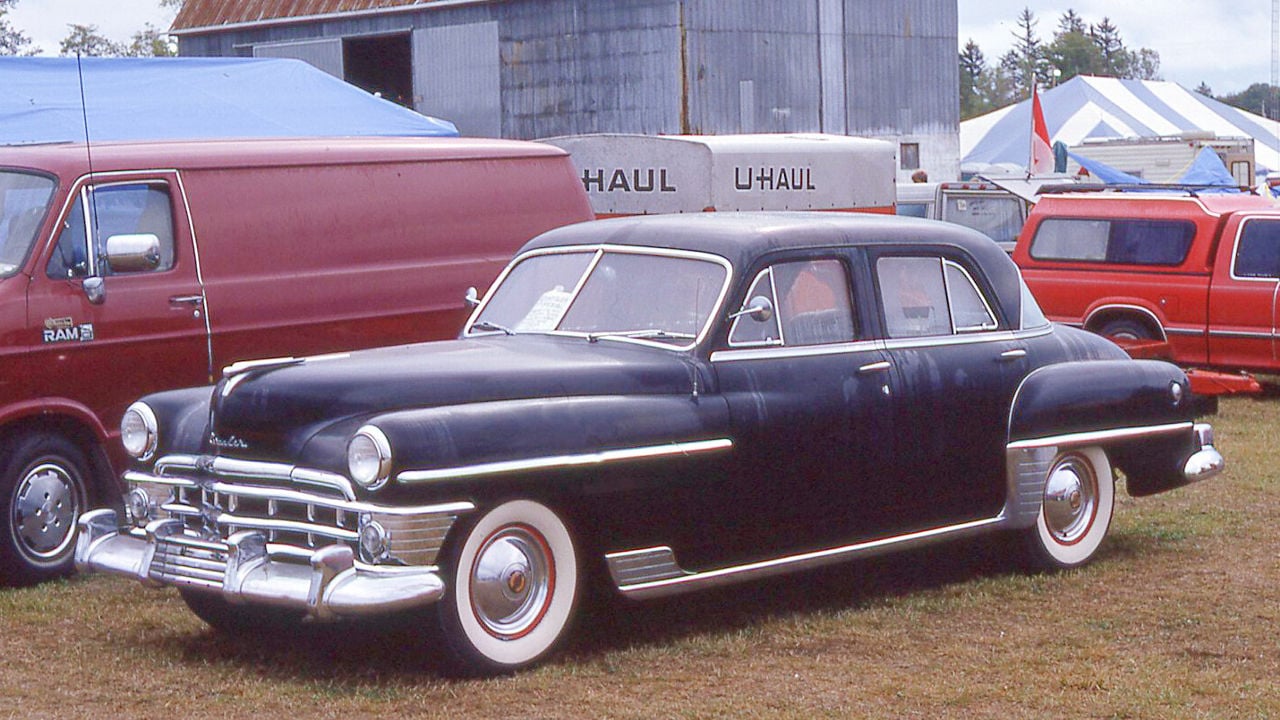
Imperial originally started out as a Chrysler car model in the 1920s, but in 1955, it became a standalone brand and Chrysler’s luxury division. New models were introduced every couple of years, and they always had a big V8, automatic transmission, and all the modern features of that era.
One of the most impressive Imperial vehicles was the LeBaron. In 1973, the massive land yacht became the longest American non-limousine production car, measuring 235.3 inches in length.
Dodge Ram SRT-10
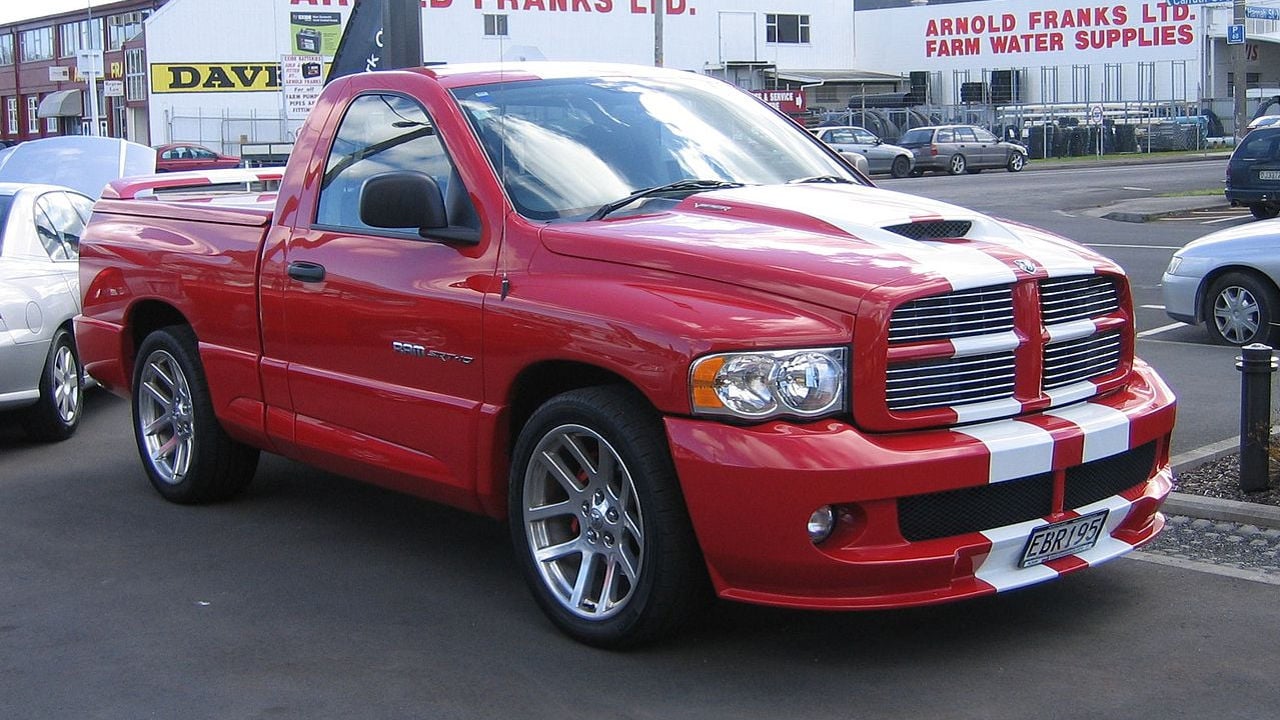
Nowadays, Mopar shoves the Hellcat V8 engine under the hood of a variety of vehicles, but back in the 2000s, they decided the Viper V10 unit was perfect for the Ram truck.
The Dodge Ram SRT-10 offered the performance of a supercar and the practicality of a work truck. No wonder it became such a massive hit. It also drank fuel like it was going out of style (which it did about a decade later), so using it as a work truck would cut into your profits.
Dodge Omni GLHS
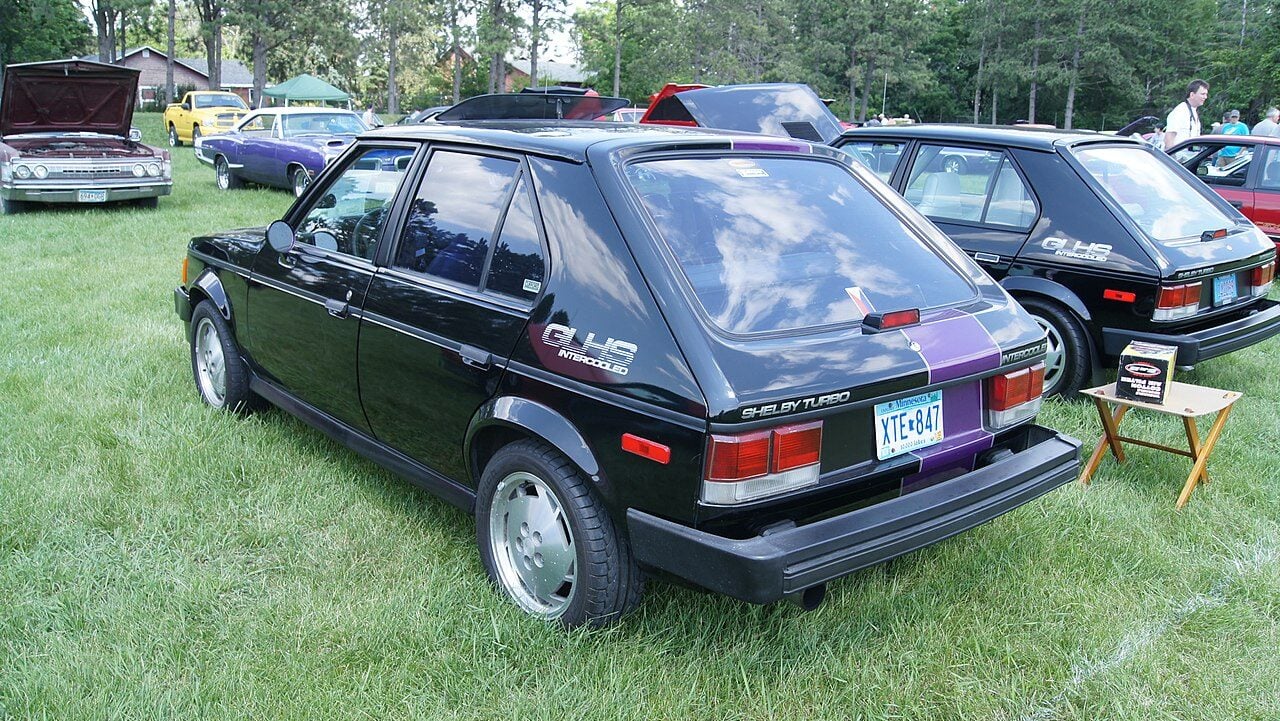
Towards the end of the 1970s, the Chrysler Corporation teetered on the brink of bankruptcy. What saved them was a government bailout and the genius of the new CEO, Lee Iacocca, who championed the new K-platform to challenge the popular cars of that time, like the VW Golf.
The Dodge Omni was one of the cars built on the platform that saved the company, and Iacocca reached out to his old friend Carroll Shelby to give it a high-performance makeover. With improved handling and a 146-horsepower turbocharged engine, the Omni GLH (Goes Like Hell) was a proper hot hatch. It even spawned the 175-horsepower GLHS (Goes Like Hell S’more).
Dodge Charger
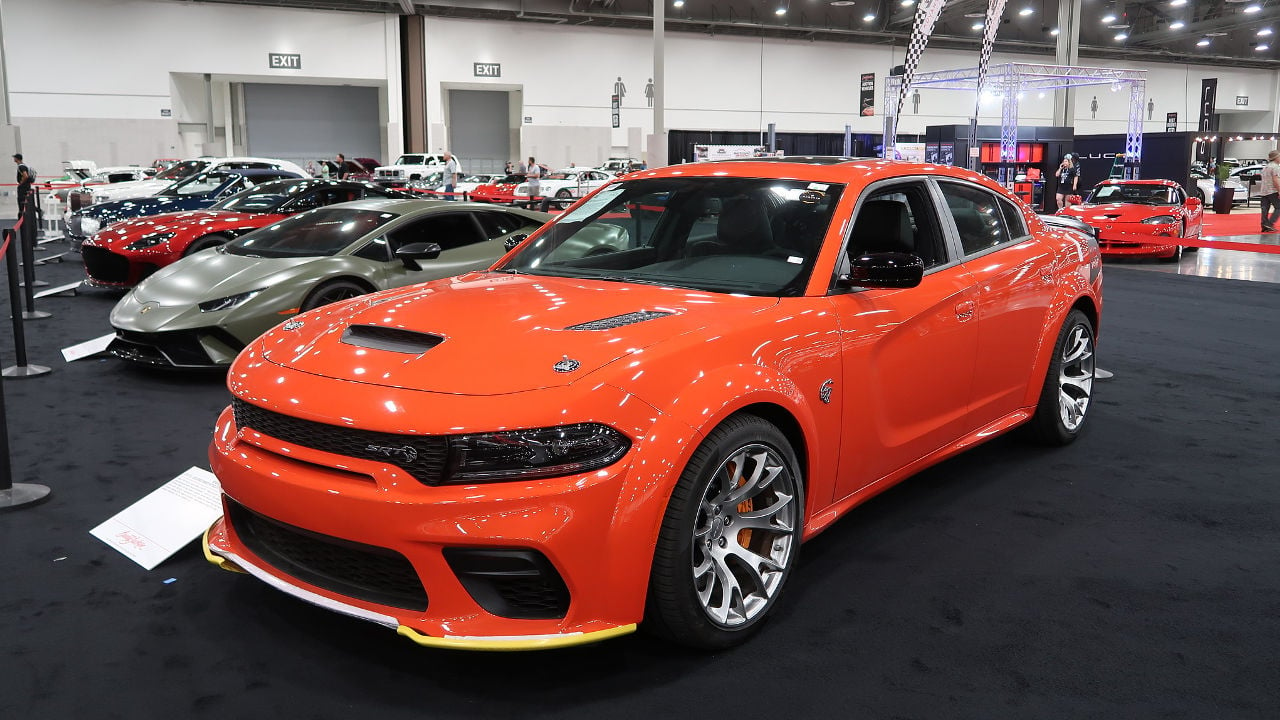
The original Dodge Charger from 1966 was the company’s entry into the popular midsize segment. It wasn’t until the attractive second generation arrived in 1968 that it became the muscle car icon it is today.
It owes its superstar status to its roles in shows like The Dukes of Hazzard and as Dom Toretto’s vehicle of choice in the Fast & Furious franchise. By the mid-70s, the Charger was a mere shadow of its former self, and in 1987, it was gone. In 2007, Dodge brought the iconic muscle car back, this time as a four-door sedan, and it’s now available with the ludicrous supercharged Hellcat V8 engine.
Dodge Diplomat
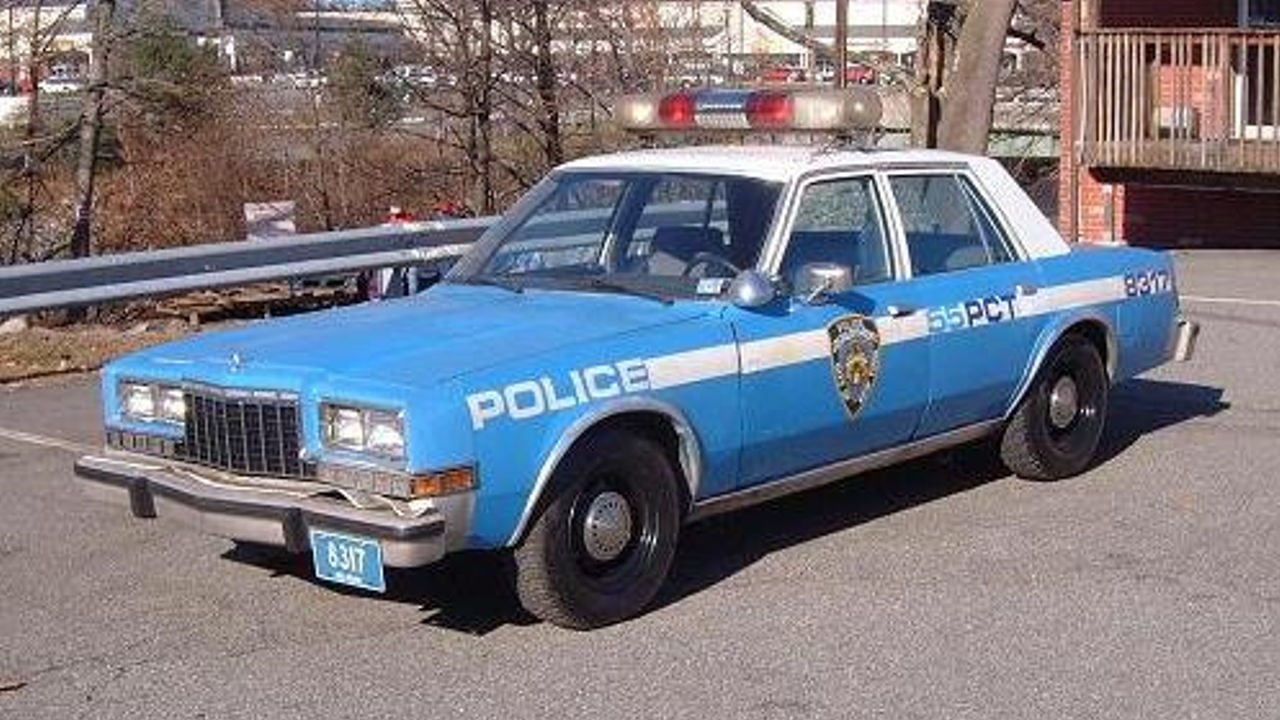
You may wonder why we included the dreary-looking Dodge Diplomat on a list of the best Mopar vehicles. Well, as bland and boring as it is, it was certainly good enough to be used by the police nationwide—largely thanks to the comfortable interior.
While the Diplomat was a popular family car in the 1980s, it has almost become synonymous with police cars from that era. Check out car chase movies from the ’80s and early ’90s and see how many Diplomats you can spot.
Dodge Challenger
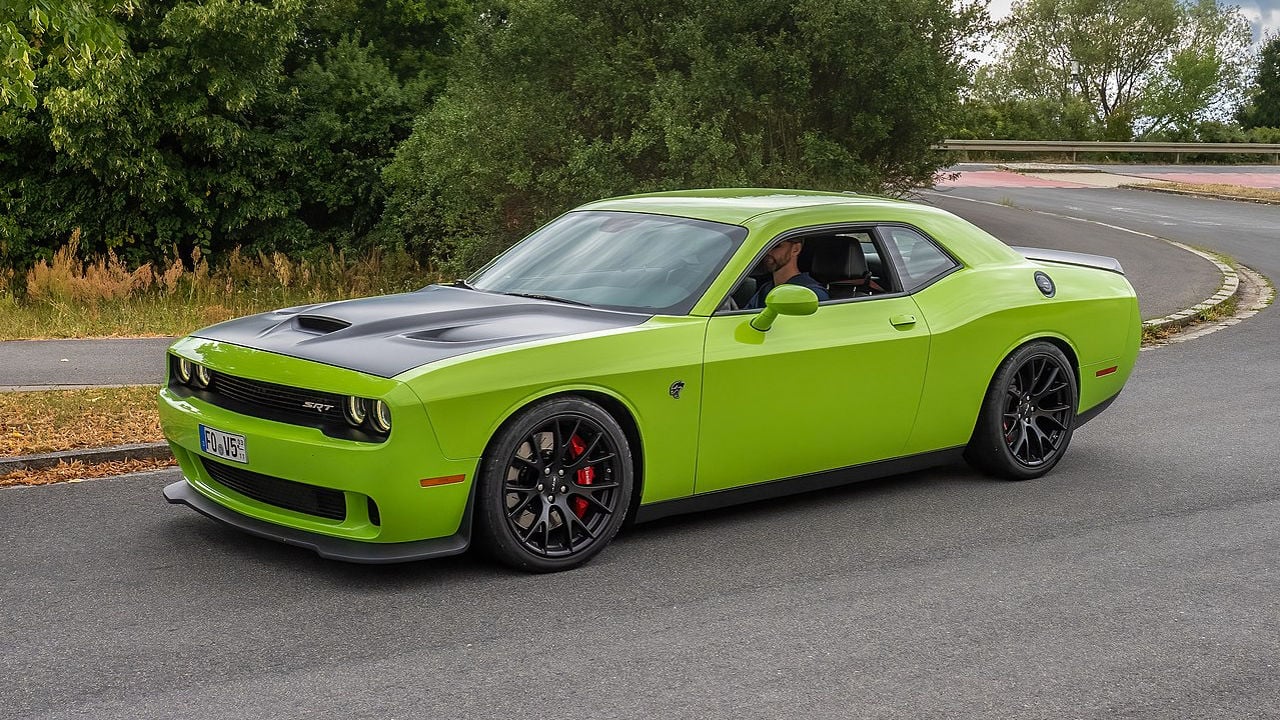
When Ford released the Mustang, Chevy followed with the Camaro. Chrysler, on the other hand, was nowhere to be seen in the pony car race that took place on the sales charts.
It wasn’t until the Dodge Challenger arrived in 1970 that they had a real answer to the popular ponies. However, the Challenger hit the ground running and immediately started accumulating fans. Like the Charger, it eventually fizzled out and became a badge-engineered Mitsubishi. Thankfully, Dodge brought back the Challenger as an excellent retro-styled beast in 2008.
Dodge Viper
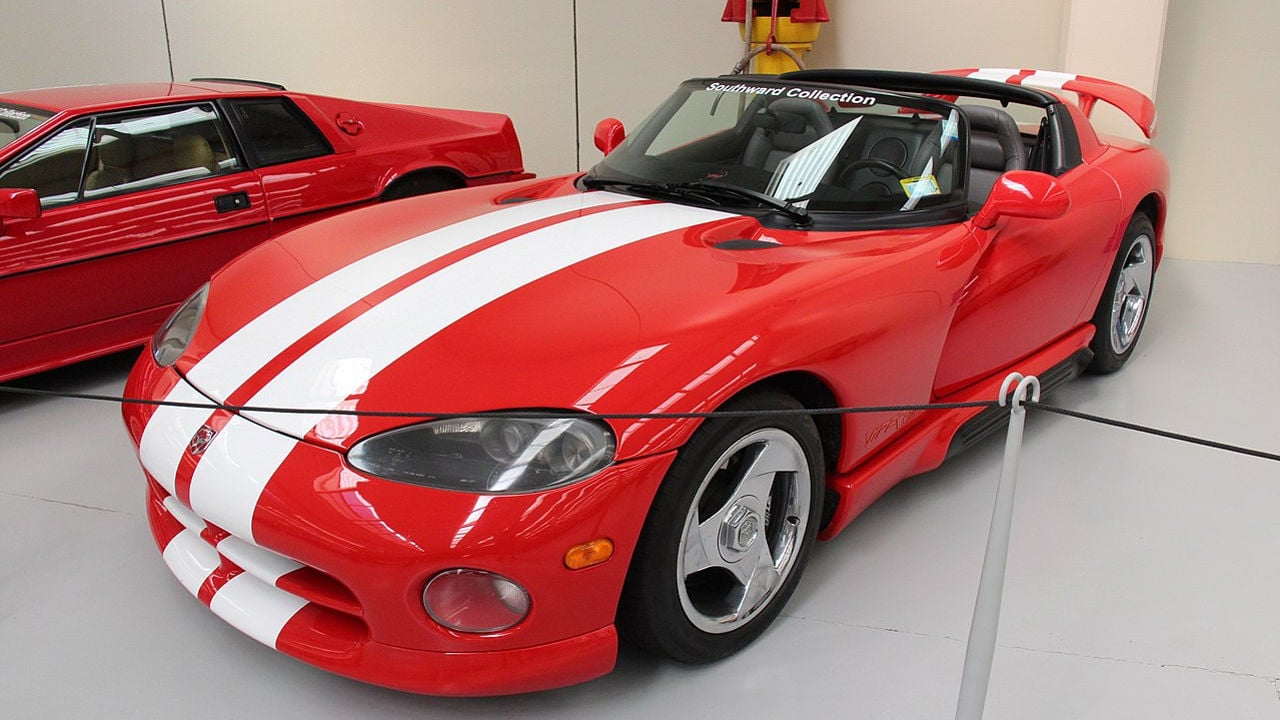
When the Dodge Viper first arrived, it really lived up to its name—it would bite if not handled with care. It got a bit more mellow with time, but it was still a machine for skilled drivers.
Its V10 engine is the stuff of legend, and prior to the Viper, there weren’t any V10-powered, gasoline-fueled sports cars. American carmakers have built several supercars over the years, but the Viper is always the first to be mentioned.
Ram 1500 TRX
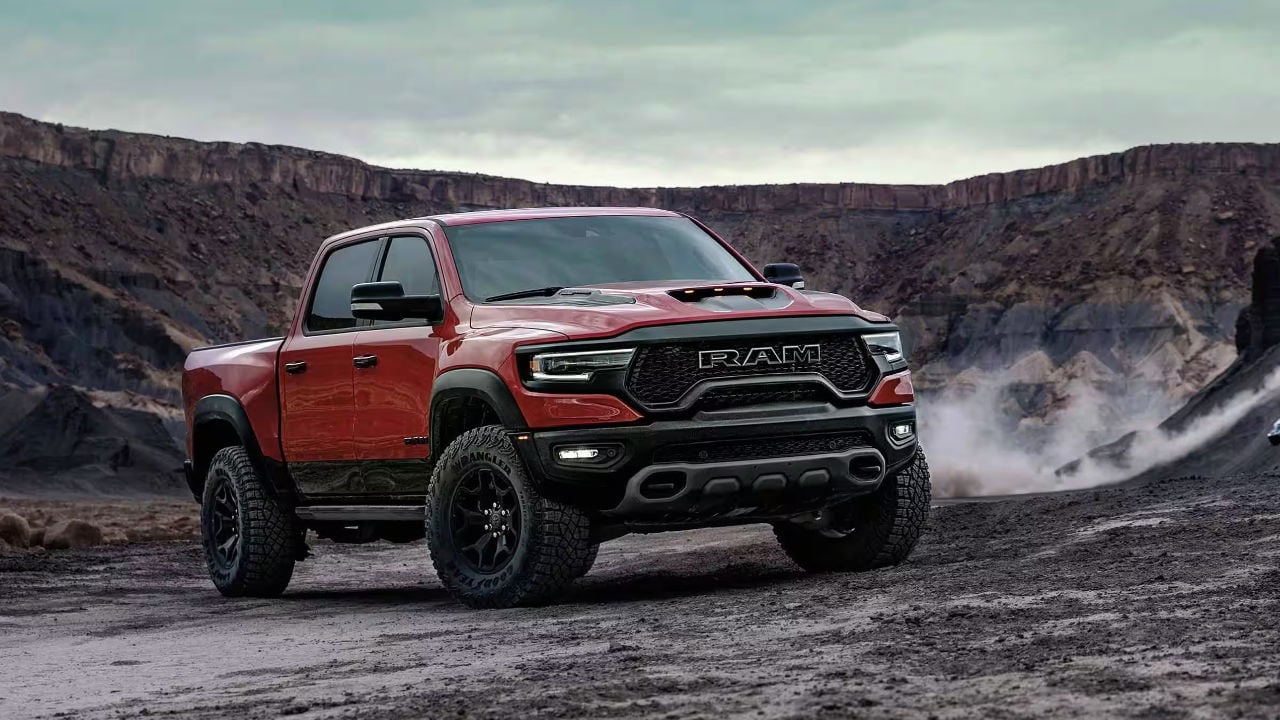
The Ram TRX is built on the same principles as the Ford F-150 Raptor, which means it’s essentially a road-legal Baja racing truck. It wasn’t just built to compete with the Raptor; it’s made to destroy it. After all, in Jurassic Park, the Raptors aren’t as powerful as the T-Rex (TRX, get it?), and it’s the same in the automotive world.
When the TRX arrived, the F-150 Raptor was only available with the 450-horsepower EcoBoost V6, and the 702-horsepower Hellcat unit made mincemeat of it. Since then, Ford has responded with the all-new Raptor R that matches the Ram in the power department.
Jeep Wrangler
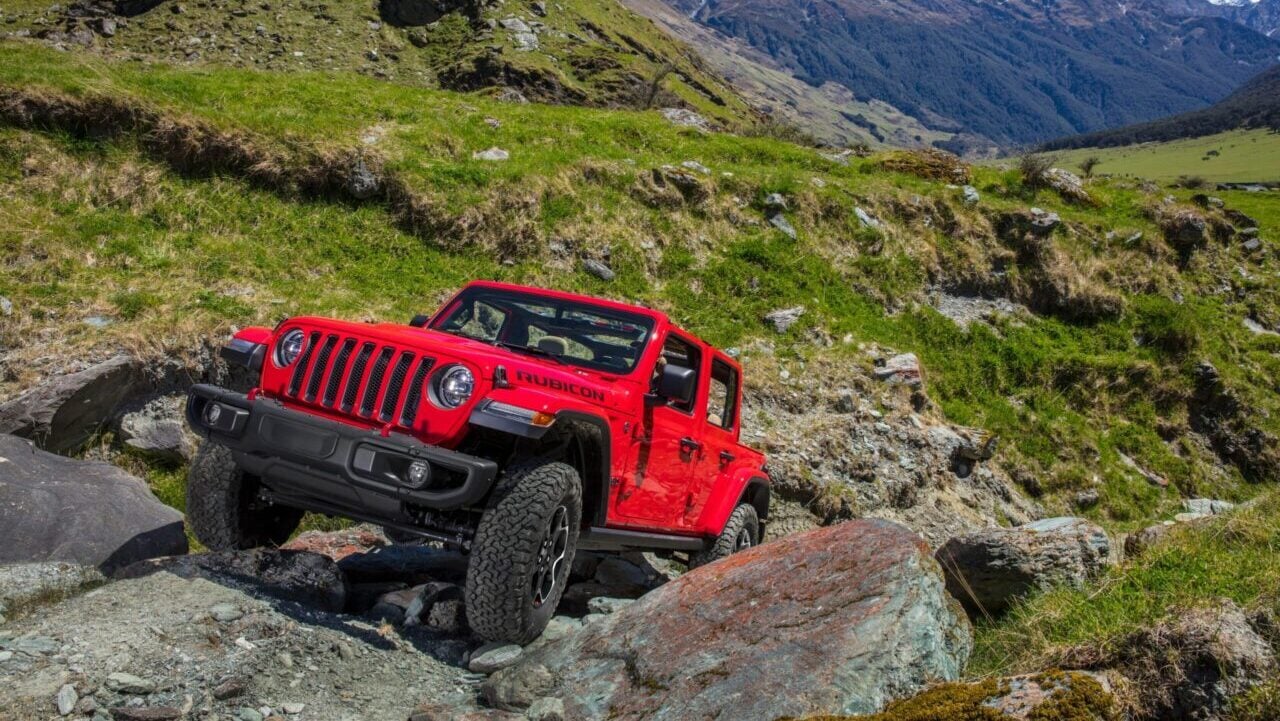
The Jeep Wrangler’s history dates back to WWII, and the popular SUV is one of the best vehicles for off-road adventures. It’s not flawless, but thanks to the massive selection of aftermarket parts, practically every problem it throws at you can be fixed.
One thing it didn’t have was a V8 engine option, but Jeep took care of that in 2021 when it introduced the Wrangler 392.
Dodge Dart
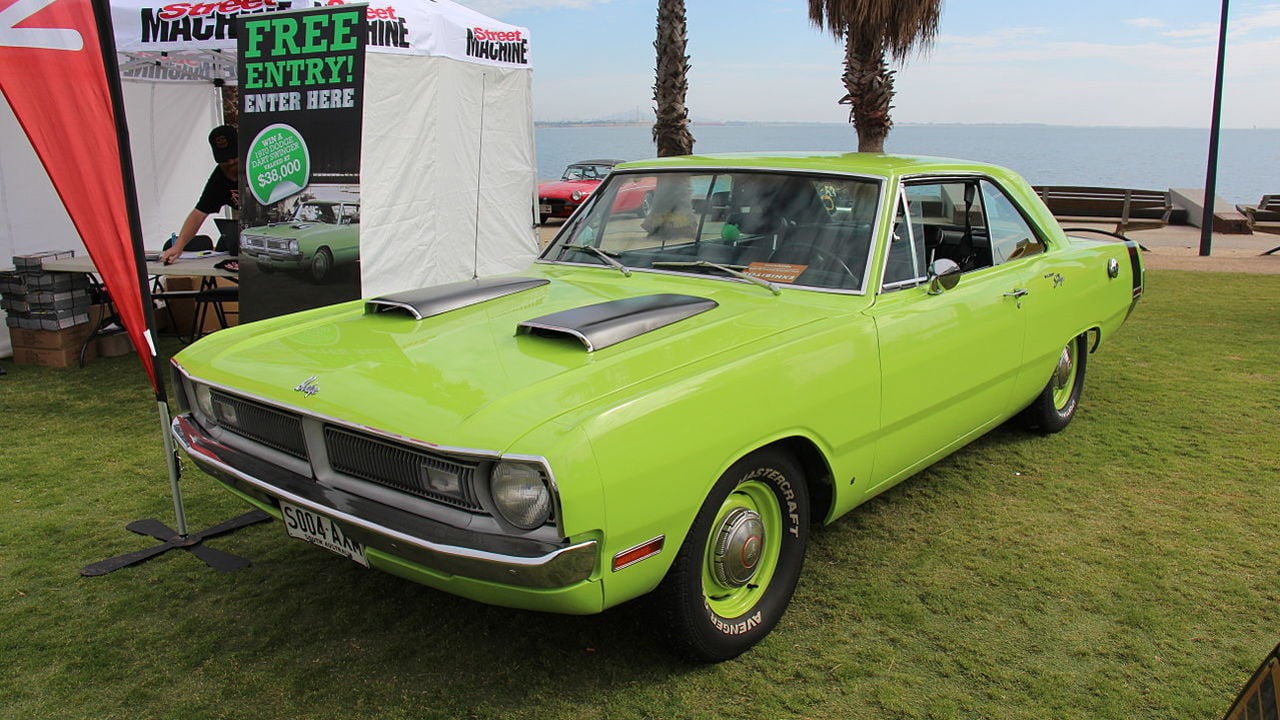
When Dodge introduced the Dart in 1960, it was a lower-priced full-size model. In 1962, it became a midsize car, and from ’63 to ’76, it was a compact car. As it shrunk, it also meant Dodge could turn it into a very lightweight muscle car by fitting big V8 engines under its hood.
Eighty Darts were given the 426 engine and became known as the Hemi Dart. The Dart GTS 440 was more readily available and still packed plenty of power—enough to collect several NHRA trophies.
Jeep Cherokee XJ
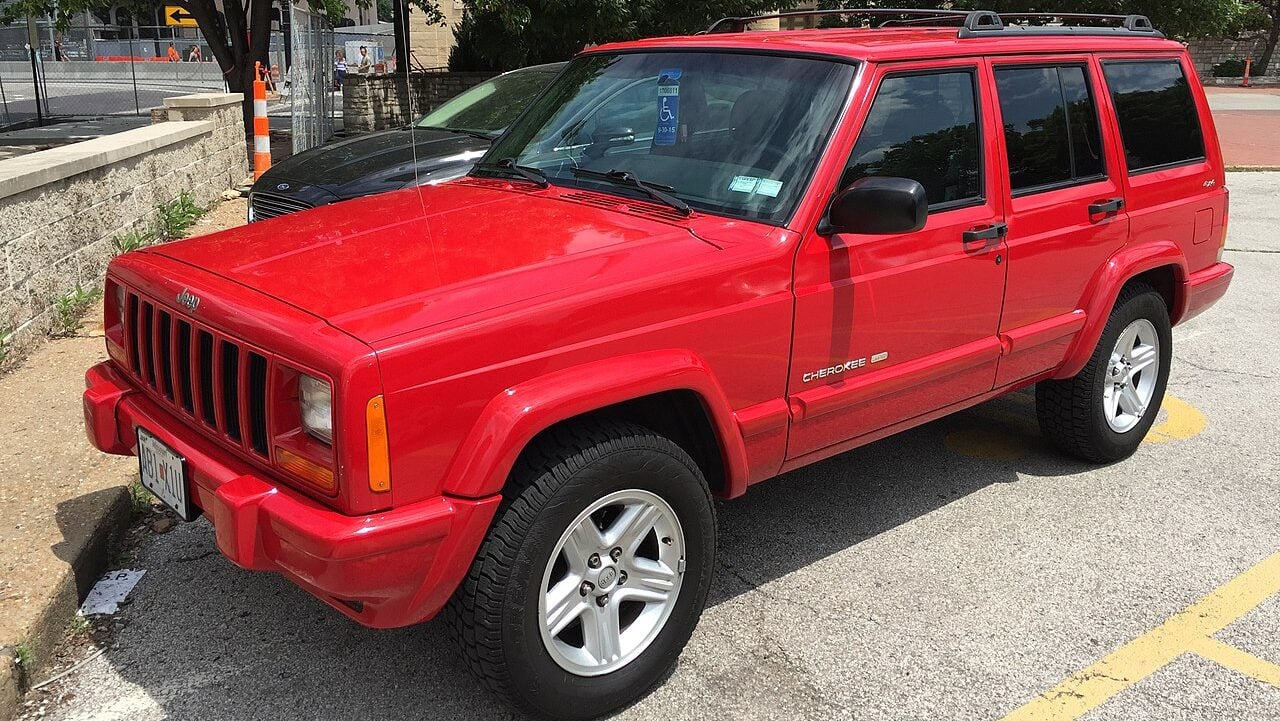
The Jeep Cherokee XJ was available in the States from 1983 through 2001. It was the first all-new Jeep design since the SJ Wagoneer in 1963. Since the SUV term hadn’t yet been coined, the XJ was marketed as a Sportwagon.
Owners and automotive journalists have raved about the XJ for decades, and it’s commonly found on lists of the best cars ever made. Part of that undoubtedly stems from its bulletproof reliability.
- SEO Powered Content & PR Distribution. Get Amplified Today.
- PlatoData.Network Vertical Generative Ai. Empower Yourself. Access Here.
- PlatoAiStream. Web3 Intelligence. Knowledge Amplified. Access Here.
- PlatoESG. Carbon, CleanTech, Energy, Environment, Solar, Waste Management. Access Here.
- PlatoHealth. Biotech and Clinical Trials Intelligence. Access Here.
- Source: https://teslatale.com/legendary-mopars/
